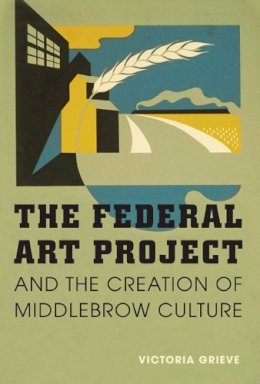
The Federal Art Project and the Creation of Middlebrow Culture
Victoria Grieve
Grieve discusses efforts by thinkers and reformers such as John Dewey, John Cotton Dana, and Constance Rourke to democratize art amid a blossoming consumer culture around World War I. Against this backdrop of ideas about aesthetics and the purposes of art, Grieve explores how the FAP, more than merely employing artists during the Great Depression, used government resources to create a space for the "everyman" to make and appreciate art. Two programs in particular--the Index of American Design and the Community Art Center program--attempted to bring art to the masses. By the end of the 1930s, however, the nationalism and cultural egalitarianism of middlebrow visual art came under attack. But the FAP had laid the groundwork for a postwar resurgence of American art, and by the 1960s, the federal government would once again enter the cultural arena.
By linking the FAP to its roots in earlier cultural movements, The Federal Art Project and the Creation of Middlebrow Culture expands the historiography of the New Deal, illuminating the role of the visual arts in the 1930s. Focusing specifically on the fundamentally different and competing views of culture that informed the Federal Art Project, this study chronicles a controversial program that, to many, represented a unique opportunity to create a cultural democracy in America.
Product Details
About Victoria Grieve
Reviews for The Federal Art Project and the Creation of Middlebrow Culture
Journal of Illinois History "Recommended."
Choice "An interesting, well-written and thought-provoking book."
American Studies "This rich study answers many important questions about an intriguing aspect of 1930s culture. The past several years have seen a growing interest in middlebrow culture, and this book will advance that current considerably."
Miles Orvell, author of After the Machine: Visual Arts and the Erasing of Cultural Boundaries "An important and original contribution to our understanding of the role of the Federal Art Project in the context of larger twentieth-century intellectual conceptualizations of the role of art in society, especially regarding middle-class and working-class audiences. Essential reading in twentieth-century art history, folklore, public history, and popular intellectual history
and a pleasure to read."
Erika Brady, author of A Spiral Way: How the Phonograph Changed Ethnography
